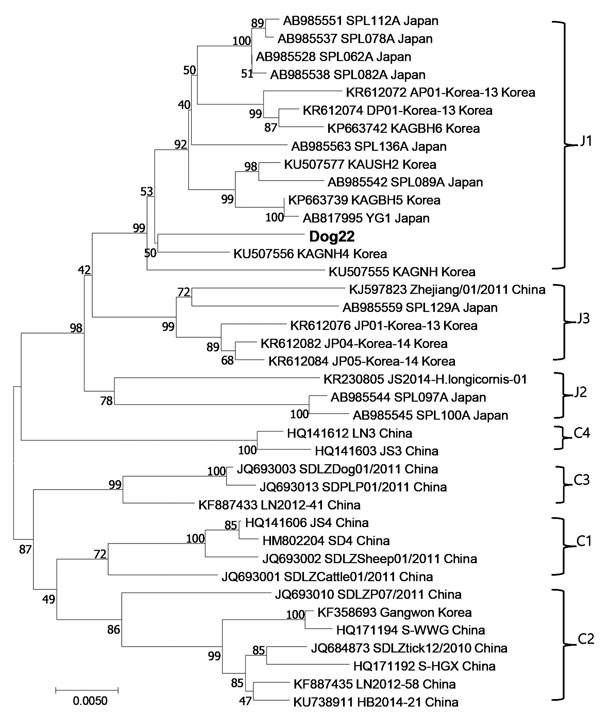Volume 25, Number 2—February 2019
Research Letter
Severe Fever with Thrombocytopenia Syndrome Virus in Dogs, South Korea
Figure

Figure. Phylogenetic analysis of severe fever with thrombocytopenia syndrome virus isolated from a military dog in South Korea (dog 22, bold) compared with reference viruses, based on the complete small segment. Evolutionary history was inferred using the maximum-likelihood method, based on the Kimura 2-parameter model (1,000 bootstrap replicates). The percentage of trees in which associated taxa clustered is shown next to the branches. The clades are designated by Japanese group. Scale bar indicates nucleotide substitutions per position.
Medline reports ref. 9 "Gong, Jiang, Liu, Han, Liu, Sun, et al., 2014" was published in Chinese, but a vernacular title is not available.
Page created: January 18, 2019
Page updated: January 18, 2019
Page reviewed: January 18, 2019
The conclusions, findings, and opinions expressed by authors contributing to this journal do not necessarily reflect the official position of the U.S. Department of Health and Human Services, the Public Health Service, the Centers for Disease Control and Prevention, or the authors' affiliated institutions. Use of trade names is for identification only and does not imply endorsement by any of the groups named above.